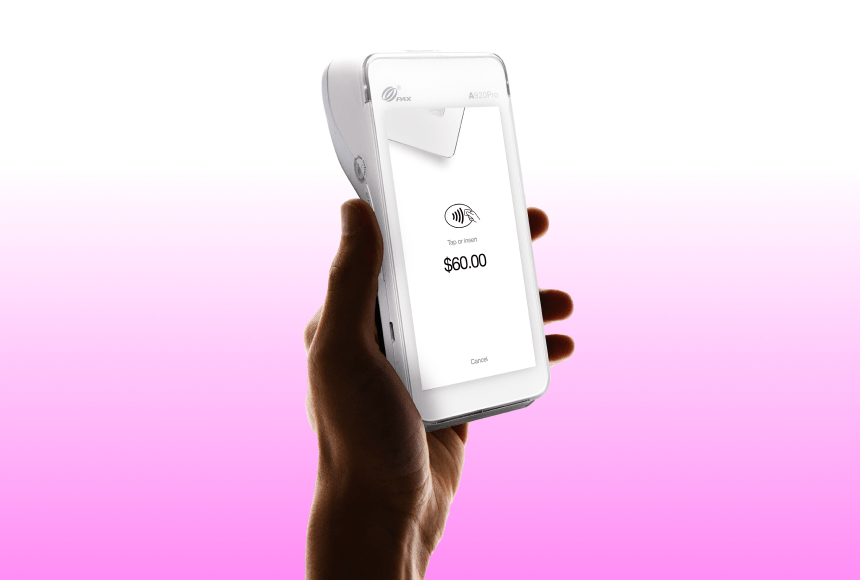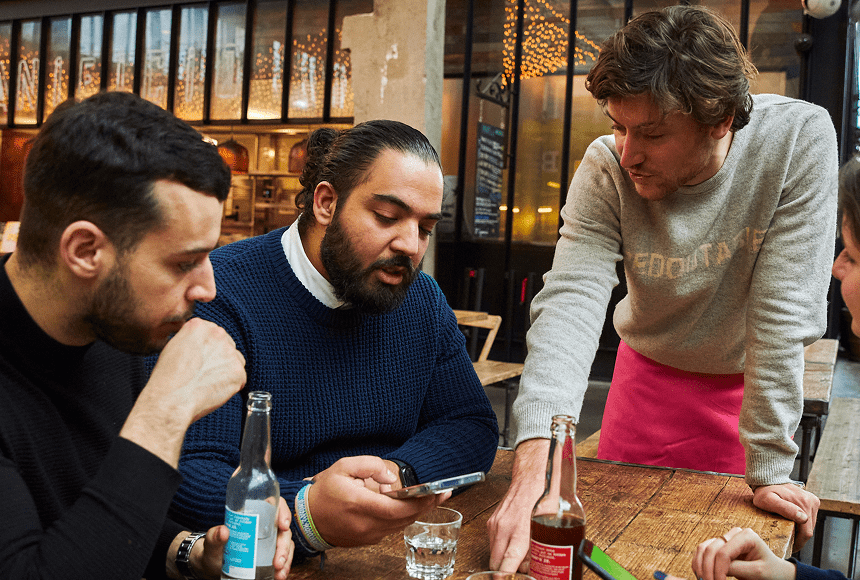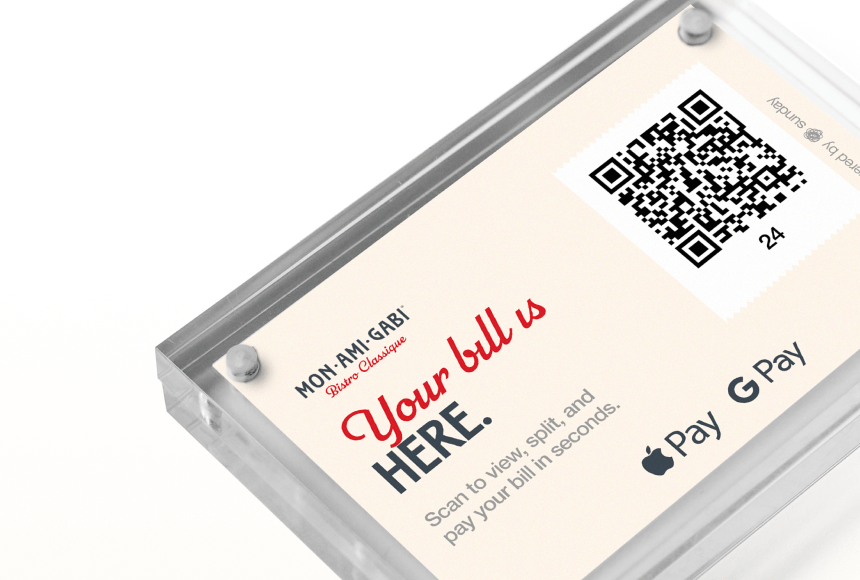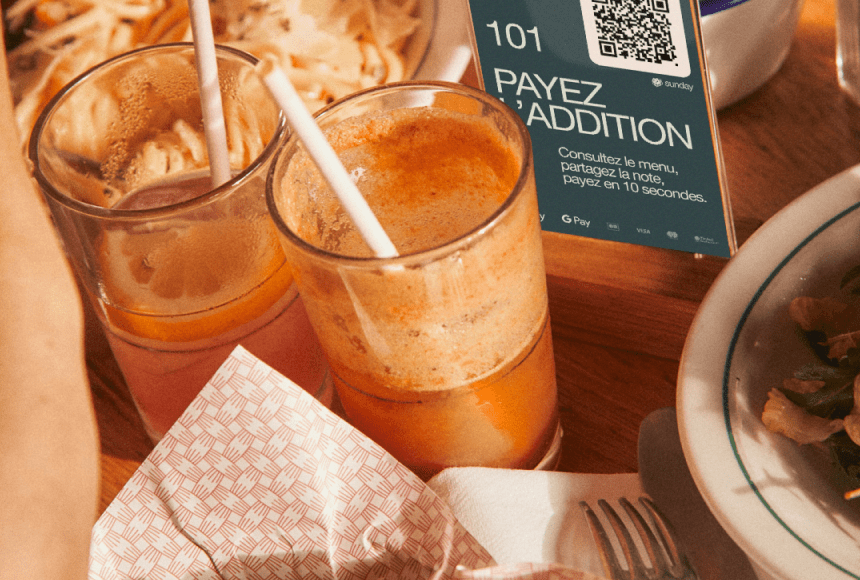
No More Table-Check Delays: How QR Codes Transform Restaurant Payments
The Unexpected Stress of Waiting for the Check
Picture this: Your guests have just enjoyed a lovely dinner. Everyone’s smiling, the plates are empty, the conversation is winding down. In an ideal world, they would settle the check and head home with that pleasant aftertaste of a perfect dining experience. Instead, they wave at their server, who’s busy juggling multiple tables, and then—nothing. The wait for the check begins.
In the United States, the typical restaurant flow involves schedules, seatings, and quick turnarounds. After all, busy spots thrive on high table turnover. If guests linger, it stalls new arrivals. Yet ironically, those same guests who are ready to leave often get stuck waiting to pay. This seemingly small delay can negatively color their experience, regardless of how great the meal was.
So, where does all this frustration come from? Why is the final step—settling the check—one of the biggest complaints from diners? In this article, we’ll explore the main reasons behind that dissatisfaction, and how modern technology—especially QR codes—provides a remarkable solution for your restaurant.
The Human Factor: What Diners Really Want
At its core, dining out is about hospitality and enjoyment. When the meal is over, diners want a quick, convenient, and courteous sign-off. They’re not keen on chasing down a busy server or waiting for the card reader to free up. According to a report from Nation’s Restaurant News, customer satisfaction can drop significantly when service steps are drawn out—especially towards the end of the meal.
Why is a prompt settlement so essential? Because your guests have already mentally shifted out of “meal mode” by dessert. Their next stop could be catching a movie, heading back to work, or picking up the kids. For them, the last thing they want is to stand at the crossroads between contentment and impatience.
As restaurant owners, property managers, or operators, you know turning tables is also key to your profitability. When the payment process drags, incoming guests wait longer for open tables. This means lost opportunities and potential negative reviews from people who believe your dining area moves too slowly.
How the Traditional Payment Process Contributes to Delays
Let’s be frank—the standard way of paying in many restaurants hasn’t changed in decades. Often it goes like this:
- The server drops off the check.
- The guest places a debit or credit card on the tray or in the folder.
- The server picks it up and walks to the card terminal.
- The server returns with the receipt, the guest signs, and may add a tip.
- The guest gives back the receipt, concluding the chain of events.
This might look perfectly normal, yet each step introduces potential friction. Maybe customers need to flag down their server; the server might have to wait at the bar area if someone else is using the card terminal. Then there’s the back-and-forth physically delivering the check and receipt multiple times.
Adding more complexity is the tip line. In the US, tipping is often a major part of a server’s income and an important indicator of customer satisfaction. Diners want to tip, but they also want to do it in a way that doesn’t require extra time or repeated visits from the server. If the process is too drawn out, the impulse to tip generously can sometimes fade, and no one wants that.
The Rise of QR Code Payment Systems
A technology once associated mostly with marketing flyers and museum audio guides is now stealing the spotlight in restaurants: the QR code. These small and clever square barcodes have become popular because they are fast, convenient, and easy to implement at each table.
When a diner scans a QR code, they can:
- View their check instantly.
- Pay directly from their smartphone, using a secure link or integrated payment solution.
- Add a tip with a single tap—no scribbling on paper or fumbling with calculators.
- Optional: Leave a Google review, or even re-order items (if your system allows it).
In fact, restaurants that use a QR code payment system typically see more satisfied customers and faster table turnover. And that shift can mean substantially less friction for both staff and diners.
Why Speedy Checkouts Matter in Modern Dining
The restaurant industry has evolved. Diners have more choices than ever—food delivery apps, ghost kitchens popping up left and right, or simply cooking at home. Competing as a brick-and-mortar establishment means delivering an elevated experience from arrival to departure.
When it comes to speedy checkouts, consider these effects:
- Higher Turnover Rates: Quick billing frees up tables faster, allowing you to accommodate more guests during busy shifts.
- Increased Customer Satisfaction: Leaving patrons with a final positive impression leads to better word-of-mouth.
- Reduced Server Stress: Staff can serve more tables efficiently instead of running back and forth with credit cards.
- Potential Revenue Boost: Diners who feel valued and un-rushed may become return customers—or add that extra dessert or round of drinks.
Peeking Under the Hood: How QR Code Payments Work
Implementing QR code payments doesn’t require an expensive tech overhaul. In most cases, you can set up codes for each table or each receipt. The diner:
- Scans a unique QR code with their smartphone camera.
- Instantly sees their bill and any tip suggestions.
- Selects a preferred payment method—debit card, credit card, or digital wallet.
- Completes the payment, typically in a matter of seconds.
No more waiting for a server to bring the bill, wait for a card machine, or sign a slip. It’s a straightforward process that streamlines the entire transaction, saving diners and staff precious time.
Of course, security is the big question on everyone’s mind. But reliable QR code payment apps use secure encryption and transaction protocols. The diner’s card details are protected, and the restaurant never handles direct card numbers. That means fewer compliance risks on your end, too.
The Warm Factor: Personalizing Your Payment Experience
Some restaurant owners worry that by introducing QR codes, they lose that personal touch. After all, dining is a human experience. The good news? QR codes don’t have to replace the server’s role; they just supplement it. Here’s how you can keep it personable:
- Instruct Servers to Introduce the System: A friendly explanation during the meal sets expectations. Servers can say, “Feel free to scan this code whenever you’re ready to pay.”
- Maintain Interaction: Let your staff continue their warm approach—answering menu questions, checking on guests. The QR code is just there when it’s time to pay.
- Include a “Thank You” Screen: Once diners complete payment, display a short, personalized thank-you note on their phone. Personalization helps replace the moment where a server would typically say, “Thank you; have a great evening.”
With these little touches, the convenience of QR payments doesn’t overshadow the human warmth that’s central to your relationship with your customers.
Case Study: A Busy Downtown Bistro
Let’s illustrate how this works in real life. Consider a bustling downtown bistro that seats around 80 guests, particularly popular during lunch hours.
Before implementing QR code payments, they noticed:
- Many customers had limited lunch breaks and felt anxious when it was time to pay.
- Servers were stretched thin, making it hard to split checks quickly.
- The card terminal area sometimes had a line of servers waiting, causing constant delays.
After rolling out QR codes, management immediately detected:
- Faster Table Turnover: Each table freed up five to ten minutes sooner on average, allowing for more seatings during peak lunch hours.
- Positive Online Reviews: Diners noted the fast, modern checkout as a highlight, making them more likely to recommend the restaurant.
- Staff Efficiency: Servers spent more time engaging with new tables rather than running receipts back and forth.
This bistro’s experience, while just one example, showcases the near-instant improvements possible when friction is removed from the payment process.
Tips, Reviews, and Beyond: The Extra Benefits
A QR code solution isn’t only about settling up. Many platforms, including sunday, allow extra features:
- Custom Tip Options: Pre-set percentages or custom amounts make tipping straightforward. Guests can tip with a simple tap.
- Integrated Reviews: If the guest had a positive experience, you can prompt them to leave a quick Google review, boosting your online reputation. Some spots see an immediate rise in reviews once they make it so effortless.
- Loyalty Programs: Reward returning customers right at the point of payment with a digital stamp or discount for next time.
From an operational standpoint, using a platform that tracks these metrics can offer you valuable insights into average tips, how many reviews you’re getting, and which items on your menu are most popular.
Comparing Traditional vs. QR Code Checkout
| Traditional Payment | QR Code Payment | |
|---|---|---|
| Time to Pay | Server-dependent process, multiple steps | Instant, guest-initiated, minimal staff involvement |
| Tip Process | Paper slip, manual calculation | Tap to select tip percentage or enter amount |
| Table Turnover | Potential delays, reliant on server availability | Quicker departures, more efficient flow |
| Staff Efficiency | Requires back-and-forth between tables & terminal | Minimal server trips, focus on hospitality |
Minimum Hardware, Maximum Output
Replacing your entire system or installing new devices can be costly. In many cases, though, adopting QR code payments doesn’t require a brand-new setup. You can still use your usual POS system for order entry while letting customers pay on their personal devices.
That helps you avoid:
- Purchasing additional card terminals.
- Cluttered trays with separate devices.
- Compatibility headaches across multiple hardware platforms.
Instead, the code just needs to integrate with your current payment processor or a platform like sunday that does the heavy lifting. Each transaction can still be recorded in your existing POS without extra steps.
Addressing Security Concerns
Concerns about fraud or identity theft are valid in an era of digital payments. That said, modern payment solutions, including QR code systems, secure every swipe or tap using encryption. The data is never stored in an easily compromised environment, making it arguably safer than handing a physical card to a server—where skimming could theoretically occur.
When evaluating providers:
- Check if they’re PCI DSS compliant, a standard for secure card payments.
- Verify they follow modern encryption protocols (TLS 1.2 or higher).
- Read up on reviews or ask for references from other restaurants that have used the solution.
Boosting Your Bottom Line
Beyond improving customer experience, implementing QR code payments can have a direct impact on your bottom line.
- Higher Tips: Quick, effortless tipping often nudges people to be more generous. When you remove friction, tips can rise.
- Less Labor Intensity: Your servers can manage more tables or coexist with fewer staff on the floor—without sacrificing service.
- Faster Table Turns: Even shaving five minutes off each table over a peak night can add up to an additional few seatings per shift.
These monetary gains, coupled with satisfied customers, feed back into positive online reviews and long-term loyalty.
The Cultural Shift: Changing Diners’ Mindsets
In certain markets, especially in the US, restaurants have used the same process for decades. Changing consumer behavior may be an initial stumbling block, but the pandemic significantly accelerated the adoption of contactless technology. According to a Forbes article, contactless payments in restaurants grew rapidly in 2020 and 2021.
Nowadays, scanning a QR code is second nature. By positioning your codes in a visible spot on the table, and providing gentle guidance from a well-trained staff, you’ll smoothly usher guests into a future where waiting for the check is outdated.
Implementing QR Codes in Your Own Restaurant
If you’re excited about the idea, here’s how you can put it into action:
- Choose a Reliable Provider: Look for a platform that syncs with your existing POS system and offers the features you need—like tipping and splitting the bill.
- Set Up Table-Specific QR Codes: Print or display them in a durable format on each table. Make it easy for guests to find and scan.
- Train Your Staff: Ensure your servers understand how the system works, so they can explain it to diners comfortably.
- Promote It: Include mention on menus or small table tents, and encourage diners to try the new, fast, and secure way to pay.
- Gather Feedback: Ask guests if they liked the process. This helps you refine and improve the system over time.
Embracing a Superior Dining Flow
When you remove the lag at the end of a meal, the entire experience benefits—your staff is less stressed, your guests leave happier, and your restaurant can serve more people. The final minutes of a guest’s time at your venue can determine whether they’ll come back or share a glowing Google review. Why gamble on a tedious money-handling routine when you can offer a fluid, modern alternative?
The more you integrate user-friendly, accessible options like QR codes, the more you edge out restaurants still clinging to pen-and-paper receipts. Diners will notice the difference—and it just might be the reason they choose you again for their next meal out.
Forward Momentum: Where QR Code Solutions Are Headed
QR codes aren’t a trend; they’re shaping the future of dining in the US and across the globe. As technology evolves, expect even more frictionless solutions. Imagine:
- Smart menus that sync with your kitchen, reducing miscommunication and wait times.
- Advanced analytics that help you anticipate rush hours or highlight menu favorites in real time.
- Integration with loyalty programs so guests automatically collect points with every QR-based payment.
FAQ: Quick Answers to Common Questions
Will older or less tech-savvy guests struggle to use QR codes?
In most cases, scanning a QR code is straightforward, even for those less familiar with smartphones. You can keep a traditional payment option if a guest prefers it, but you’ll find many people adapt quickly when shown how to scan.
Does implementing QR codes replace having servers?
Not at all. Your servers remain essential for a warm, human-centric experience—answering questions, suggesting menu items, and ensuring guests enjoy their meals. QR codes just remove the logistical hassle of the payment process.
Are QR code payment systems secure?
Yes, as long as you choose a reputable provider that uses encryption and complies with regulatory standards. Transactions are generally safer than physical card exchanges because sensitive data never passes through the hands of an employee.
Can I still split checks with QR codes?
Yes, most QR code payment platforms allow easy splitting among multiple people at the same table. Diners can even pay for individual items or divide the total amount equally—further streamlining the process for everyone involved.
What kind of return on investment can I expect?
While the exact ROI varies by restaurant size and volume, you’ll likely see benefits from faster turnover, reduced server workload, and satisfied guests tipping more. Each of these factors contributes significantly to healthier profit margins over time.
Move forward with confidence, knowing that small changes to the checkout process can yield major wins. sunday’s QR code solution is one of the easiest, most guest-friendly ways to keep your restaurant thriving—by focusing on what matters most: delivering an outstanding experience at every stage of the meal.
Find out more today
Drop us your details below and we’ll reach out within the next 24h
The payment terminal to make your operation simpler.
Connected to your POS, we offer the only payment terminal specifically designed for restaurants.




